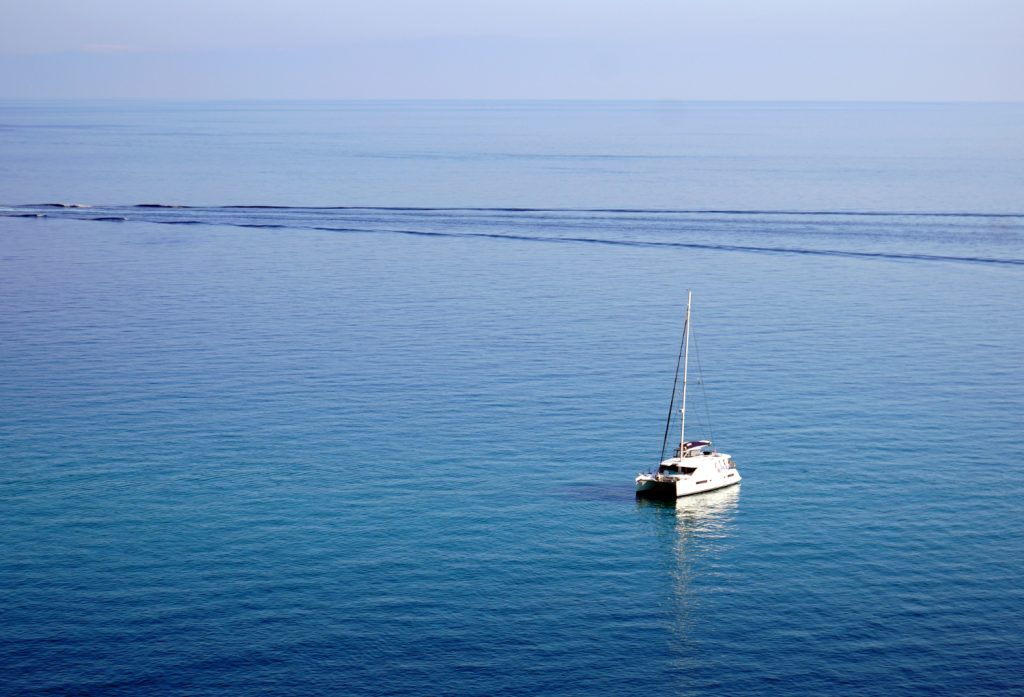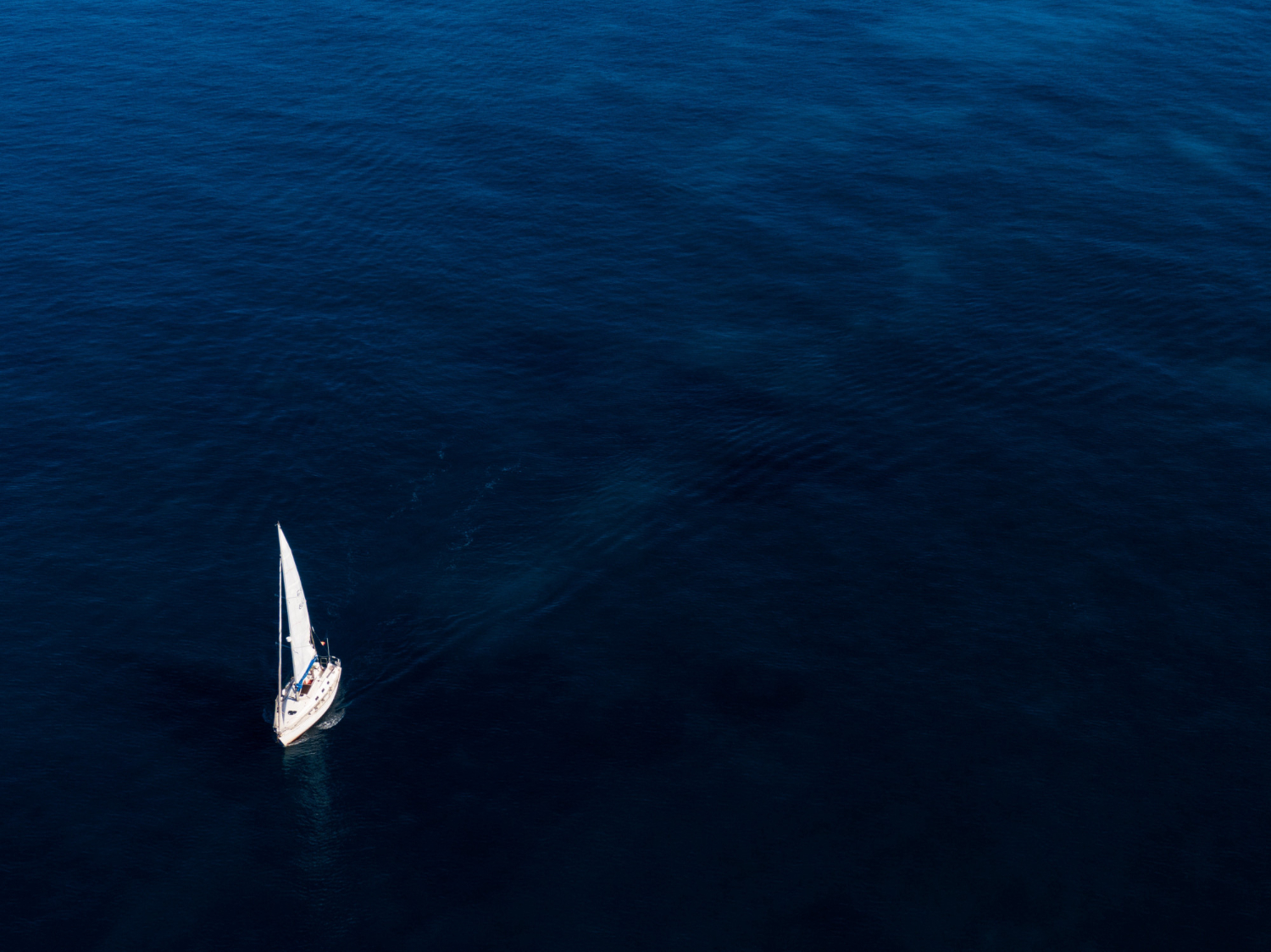Hochseesegeln ist für alle, die das Abenteuer auf offenem Meer suchen, eine Herausforderung wie keine andere. Dieser Leitfaden soll sowohl Anfängern als auch erfahrenen Seglern dabei helfen, die Feinheiten des offenen Meeres zu meistern. Ganz gleich, ob Sie von Hochseesegeln, einer Transatlantikreise oder einer gemütlichen Erkundung der Ostküste träumen, dieser Artikel führt Sie durch das Wesentliche, was Sie zur Vorbereitung, Planung und zum Erfolg auf dem Meer brauchen.
Warum Hochseesegeln für Abenteurer attraktiv ist
Hochseesegeln ist mehr als nur eine Art des Reisens - es ist eine faszinierende Reise, die Ihr Können, Ihren Mut und Ihre Bereitschaft auf die Probe stellt. Der Ruf des Ozeans, die Einsamkeit und die Freiheit der Wellen locken jedes Jahr viele Segler an. Diejenigen, die sich der Herausforderung stellen, werden immens belohnt: mit einem sternenklaren Himmel, einsamen Inseln und der unvergleichlichen Ruhe, die man fernab vom Land genießt.
Der Übergang vom Küstensegeln zum Hochseesegeln erfordert einen erheblichen Schritt in der Planung und im Engagement. Im Gegensatz zu kurzen Wochenendsegeltörns erfordern Hochseetörns geistige und körperliche Belastbarkeit sowie die Beherrschung verschiedener maritimer Fertigkeiten.
Die Wahl des richtigen Bootes für das Hochseesegeln
Nicht alle Boote sind für den Einsatz auf See geeignet. Die Wahl eines seetüchtigen Bootes mit robuster Konstruktion und zuverlässigen Systemen ist entscheidend. Zu den wichtigsten Überlegungen gehören:
- Konstruktion und Material des Rumpfes: Entscheiden Sie sich für einen Rumpf aus Glasfaser oder Aluminium, der auch rauer See standhält.
- Typ des Kiels: Ein Vollkiel bietet eine bessere Spurtreue und Stabilität.
- Lenkung: Redundante Systeme sind wichtig für den Fall eines Ausfalls.
- Speicherkapazität: Lange Passagen erfordern ausreichend Platz für Wasser, Lebensmittel und Ausrüstung.
Zu den Booten mit einem soliden Blauwasser-Ruf gehören Hallberg-Rassy, Pacific Seacraft und Amel. Die Erfahrung und das seglerische Können der Besatzung sind jedoch oft wichtiger als die Marke des Bootes.

Routenplanung: Den besten Weg finden
Ein wichtiger Teil des Hochsee- und Hochseesegelns ist die Routenplanung. Dabei geht es nicht nur um die Auswahl eines Ziels, sondern auch darum, den sichersten und effizientesten Weg dorthin zu finden und dabei zu berücksichtigen:
- Wettermuster
- Passatwinde
- Saisonale Stürme
- Ozean Ströme
Die klassische Route von der Ostküste in die Karibik ist im Winter sehr beliebt. Viele stechen von New York oder der Chesapeake Bay aus in See und kommen auf den Jungferninseln oder den Bahamas an. Diejenigen, die den Atlantik überqueren, starten dagegen in der Regel im späten Frühjahr von der Ostseite Nordamerikas aus und nutzen die günstigen Passatwinde.
Vorbereitungen für das Offshore-Segeln
Sobald Sie Ihre Route geplant haben, sollten Sie sich auf die Ausrüstung, die Vorräte und die Notfallprotokolle konzentrieren. Diese Vorbereitungsphase kann über Erfolg oder Misserfolg Ihrer Reise entscheiden.
Zu den wichtigsten Dingen, die mitgeführt werden müssen, gehören:
- Navigationstools: Papierkarten, GPS, Kompass, Radar.
- Fangvorrichtung: Rettungsinsel, EPIRB, AIS, Jacklines, Gurte.
- Verbandskasten: Dazu gehören Antibiotika, Mittel gegen Seekrankheit und Wundversorgung.
- Kommunikation: UKW-Funk, Satellitentelefon und Internet, wenn möglich.
Außerdem müssen Sie viele Tage auf See einplanen und für ausreichende Vorräte an Lebensmitteln und Wasser sowie eine solide Abfallentsorgung sorgen.
Das Leben an Bord beim Hochseesegeln
Wenn man auf dem Meer unterwegs ist, wird das tägliche Leben zu einem Rhythmus aus Wachen, Wartung, Mahlzeiten und Navigation. Langstreckensegeln lehrt Geduld, Disziplin und Teamwork.
Zu den wichtigsten Routinen an Bord gehören:
- Zeitpläne beobachten: In der Regel 3-4-Stunden-Schichten, die rund um die Uhr rotieren.
- Bootskontrollen: Tägliche Inspektion von Motor, Takelage und Systemen.
- Wetterverfolgung: Ein wachsames Auge auf Veränderungen kann Gefahren vorbeugen.
Trotz der hohen Arbeitsbelastung beschreiben viele Segler das Hochseesegeln als meditativ und transformierend. Der endlose Ozean, die brillanten Sonnenaufgänge und die Delfinbegleitung sind es wert.
Der Umgang mit dem Wetter und dem Unerwarteten
Schlechtes Wetter ist unvermeidlich. Es ist wichtig zu wissen, wie man die Anzeichen eines herannahenden Systems erkennt und entsprechend handelt.
Die Strategien umfassen:
- Heben nach bei Stürmen, um die Kontrolle zu behalten.
- Vorzeitige Segelreduzierung wenn der Wind zunimmt.
- Führen einer aktuellen Wetterdatei über den Satellitendienst.
Der Wechsel zwischen verschiedenen Küstenregionen und küstennahen Zonen bedeutet, dass Sie mit einer Vielzahl von Herausforderungen konfrontiert werden - von plötzlichen Sturmböen bis zu langen Flauten. Flexibilität und Vorbereitung sind Ihr bester Schutz.
Reiseziele, die eine Reise wert sind
Einige der atemberaubendsten Reiseziele liegen weit vom Festland entfernt und sind nur über den Seeweg erreichbar. Hier sind einige, die jedes Jahr viele Kreuzfahrer anlocken:
- Jungferninseln: Ideal für Blauwasser-Neulinge, mit geschützten Ankerplätzen.
- Karibik: Inselhüpfen in türkisblauem Wasser möglich.
- Azoren: Ein guter Zwischenstopp für alle, die den Atlantik überqueren wollen.
- Südpazifik: Ultimativ Überseefahrt Gebiet, in dem abgelegene Inselkulturen und lebendige Riffe beheimatet sind.
Diese Orte belohnen die Mühe der Anreise mit einer unvergesslichen Landschaft, Kultur und Erfahrung.
Lernen von den erfahrensten Seglern
Die erfahrensten Segler haben eines gemeinsam: Bescheidenheit im Angesicht der Natur. Sie bereiten sich ausgiebig vor, respektieren Wettersysteme und hören nie auf zu lernen. Viele geben ihr Wissen über Blogs, YouTube-Kanäle oder altmodische Erzählungen an Ankerplätzen weiter.
Wenn Sie gerade erst anfangen, lohnt es sich, für jemanden mit mehr Erfahrung an Bord zu gehen, bevor Sie alleine losfahren. Dabei lernen Sie Dinge aus der Praxis, die Ihnen kein Handbuch beibringen kann.
Wichtige Lektüre und Leitfäden
Es gibt unzählige Bücher und Ressourcen, die Ihnen bei der Vorbereitung helfen. Diese Leitfaden empfiehlt ein paar Klassiker:
- "Weltweite Kreuzfahrtrouten" von Jimmy Cornell - die Bibel der Routenplanung
- "Das Handbuch für Reisende" von Beth Leonard - ein praktisches Handbuch für das Leben auf See
- Navionics-Karten - sowohl für die digitale als auch für die Papiernavigation von entscheidender Bedeutung
Erwägen Sie auch die Teilnahme an Online-Foren und lokalen Küste Segeln Clubs für Ratschläge und Kameradschaft.
Abschließende Überlegungen: Den Sprung wagen
Hochseesegeln ist nicht nur etwas für Wagemutige oder Wohlhabende - es ist für jeden geeignet, der sich engagiert vorbereitet, bereit ist zu lernen und eine Leidenschaft für das Meer hat. Es erfordert Engagement und Mut, aber die Belohnungen sind unermesslich. Ganz gleich, ob Sie davon träumen, unter den Sternen zu segeln oder eine versteckte Bucht an der Ostküste zu entdecken, es gibt einen Platz für Sie in dieser weiten blauen Welt.
Machen Sie also den ersten Schritt. Erstellen Sie Ihre Liste. Studieren Sie die Karten. Und bereiten Sie sich darauf vor, in eines der größten Abenteuer des Lebens zu segeln.

 Hochseesegeln: Ein praktischer Leitfaden für Abenteurer">
Hochseesegeln: Ein praktischer Leitfaden für Abenteurer">
